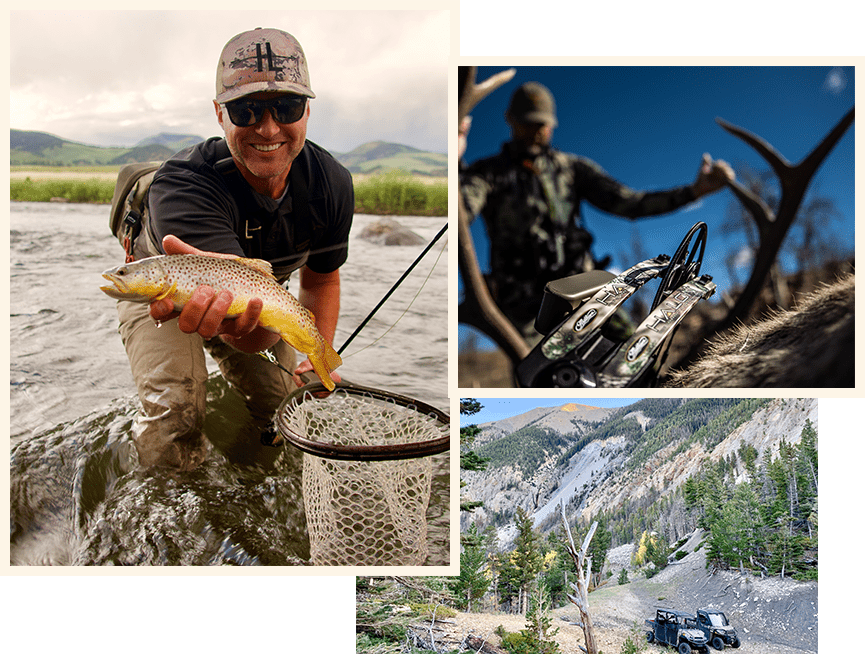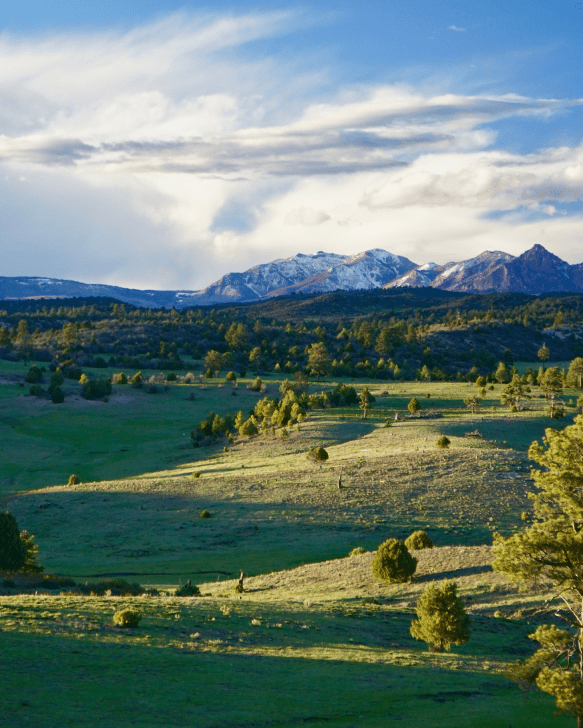Learn about our fishing properties for sale!
Why is it that some flyfishers consistently catch more than their fair share of gargantuan trout? Certainly there are many reasons, but you can bet your favorite flyrod that streamer fishing figures prominently in their arsenal of lunker-hunting techniques. Year-in and year-out, streamers probably account for more truly large trout coming to the net than all other flyfishing techniques combined. Every Rocky Mountain flyfisher who dreams of hooking trout too large to fit in his net, then, ought to carry a box well-stocked with a variety of streamers and know how to fish them effectively.
Streamers work on larger trout because they imitate small fish, which frequently become a significant part of the diet of larger trout. The “big bites” that smaller fish offer can prove irresistible to trout looking to chow down on a maximum number of calories in one gulp. Although large trout can become maddeningly selective feeders on midge emergers and other miniscule fare, all things being equal, a well-presented prime rib of a streamer will seldom be ignored entirely by the largest trout in the water.
Fish that Rocky Mountain trout commonly eat include sculpins, dace, chubs and fingerling trout (yes, cannibalism is alive and well in the trout kingdom). Fly patterns representing these species range from the highly imitative (Gummy Minnows) to the impressionistic (Wooly Buggers). A basic idea of baitfish species present in any given river can aid fly selection, but in lieu of such knowledge, simple experimentation will often reveal a winning pattern. For instance if a flashy pattern isn’t producing, try one without flash, or substitute a light-colored streamer for a dark one. With streamers, there’s often no rule of thumb, except to discover what mood the trout are in on any given day.
Despite the trout’s uncertain daily proclivities, certain streamer patterns have proven their worth in many Rocky Mountain waters over the years. Every Rocky Mountain angler, then, should stock a flybox with the following streamer types, in sizes 6 through 10: Zonkers, Muddler Minnows, Woolly Buggers, Clouser’s Minnows and Matukas. Variations of all these patterns run into the hundreds, so feel free to experiment. Particular color variants that many anglers favor include, on the dark end of the scale, shades of olive and black, and on the light end, yellow and white. Beadheads or coneheads can help sink streamers to the level of the fish quickly.
Since streamers are bulkier than dry flies or nymphs and are more wind-resistant to cast, anglers need a “beefier” flyrod to avoid turning their casting arms into silly putty. A fast-action, 5-weight rod makes a lightweight streamer rod, but a 6- or 7-weight, 9-foot rod is optimum. Lesser rods can result in poor casting at best, or a streamer impaled in the back of your head at worst. On shallower streams, a weight-forward floating line is sufficient, but deeper water may require a sink-tip or full sinking line. Leaders can generally be shorter than needed for dry fly or nymph fishing, from 4 to 7 feet, and should be tapered to 2X or 3X, stout enough to handle hard hits from large fish.
Streamers represent living fish, thus they should usually be fished actively in the water. A standard across-and-down swing is often all it takes to get trout to chase, but inducing them to actually strike may take fast or slow strips on the swing or small upstream strips at the end of the swing. Large trout frequently hold in the best-looking sheltered areas on the river, so fish these spots carefully, making mends in order to get your “big meal” to the depth of the fish. You may just be surprised with the largest trout of the year, or maybe your lifetime.


